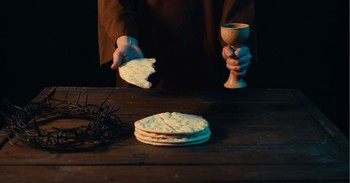There are many beloved Christmas traditions around the world today. Your family may even have your own unique and personal Christmas traditions. The most well-known Christmas traditions today include the Christmas tree, advent calendars, and leaving cookies and milk out for Santa Claus. Each of these traditions has its own unique origins; however, not all Christmas traditions have their origin in Christianity.
History of the Christmas Tree
“Rockin' around the Christmas tree/Have a happy holiday” are the lyrics of the famous Christmas song “Rocking Around the Christmas Tree” by songwriter Johnny Marks. It is without a doubt that Christmas trees have turned into a staple part of the Christmas season.
Once a person or a family decorates the Christmas tree, it turns the plain evergreen tree into a pulchritudinous addition to the home. Ornaments, candy canes, garland, stringed lights, and the angel or star on top of the tree turn the entire home into festive living quarters.
How many of us can imagine Christmas without a Christmas tree? Particularly in America, when a person sees a Christmas tree, they think of Christmastime. The origin of the modern-day Christmas tree dates back to the time of the Middle Ages in Germany; however, the official start of trees being associated with Christ starts much earlier by the work of a monk.
Stemming from pagan roots, it is believed Christmas trees became a symbol of Christ by the work of Boniface, who was a missionary monk to Germany in the eighth century. In the story, Boniface comes upon pagans offering sacrifices to the false god named “Thor” in front of the false god’s “sacred” oak tree.
As the story goes, Boniface takes an ax and cuts down the oak tree right in front of all of the pagans. The pagans thought Thor would strike Boniface with lightning because Boniface had destroyed Thor’s sacred tree; however, when nothing happened, the pagans listened to Boniface’s message of Christ and became believers (Ibid.).
Supposedly, out of the cut oak tree, a fir tree grew. In modern days, the Christmas tree is supposed to symbolize Christ. The Trinity is found in the shape of the Christmas tree as Christmas trees are triangular in shape, thus reflecting the Father, Son, and Holy Spirit.
During the 16th century, Germans used to decorate their Christmas trees in celebration of Christ with apples, gingerbread, and various nuts (Ibid.).
This same tradition migrated to other parts of Europe as well, which ultimately was brought to America when German and British communities came to live in the United States. Now in the modern-day, families decorate Christmas trees with ornaments, garland, and twinkling lights.
Origin of Advent Calendars
Advent calendars are increasingly popular as it is common to find these calendars popping up before Thanksgiving in supermarkets. The advent calendar is a countdown calendar to the day of Christmas. Christians celebrate the days leading up to the birth of Christ by counting the days down with the advent calendar.
Most advent calendars start on the first day of December and end on December 25, which is believed to be the day Jesus was born into the world. On each day, children, adults, and families can discover a treat behind each door number as Christmas Day approaches.
The tradition of advent calendars originally began in 19th century Germany when Christian German families would use tally marks on a door or a wall to countdown the days to Christmas.
German printer Gerhard Lang helped pave the way for modern advent calendars by creating cardboard advent calendars, which he later crafted with the ability to have a little door to open behind each number of the day counting down to Christmas (Ibid.).
Lang’s first advent calendars contained Bible verses behind each door in anticipation of the coming Christmas Day (Ibid.). In the present day, advent calendars can contain anything from Bible verses, small gifts, to specialty candies.
Start of Leaving Cookies and Milk for Santa Claus
Most children grow up with the exciting event of leaving out cookies for Santa Claus before they go to bed on Christmas Eve. Some families choose to bake homemade cookies while others choose to buy a tasty cookie at the local grocery store.
Whether a person leaves homemade cookies or store-bought cookies out for Santa, there is always a cup of milk for Santa to wash down his cookies with. Children reason Santa must be hungry and thirsty since he is traveling across the world in a sleigh flown by eight tiny reindeer! Many children even insist on leaving out carrots, celery, or another veggie for the reindeer.
The origin of leaving cookies and milk out for Santa stems from America in the 1930s. The 1930s was the time of the Great Depression, which as the name suggests, was a difficult time for America. The stock market had crashed, and many families were going through hard economic times.
During the Great Depression, parents prided themselves in teaching their children the blessedness of giving to others and practicing thankfulness (Ibid.). The concept of giving to others was reflected in children leaving out cookies to Santa in order to say, “thank you” for their gifts.
Even earlier than the Great Depression, children used to leave out food for Sleipner, who was an eight-legged horse that traveled with the Norse God Odin. This belief stems from Norse mythology as they believed if they left our food for Sleipnir, Odin would come to their home and leave them gifts in exchange for their kindness (Ibid.).
Across the world today, there are various different foods, drinks, and gifts children leave out on Christmas Eve. French children leave out a glass of Père Noël, German children leave handwritten notes for the “Christkind,” and Irish children leave out a pint of Guinness to accompany cookies for Mr. Claus (Ibid.).
No matter where children live across the world, they grow excited to leave out goodies for the kind visitor who leaves them gifts for Christmas Day.
The Real Christmas Story
These three most popular Christmas traditions do not all stem from Christian origins; however, we associate Christmas trees, advent calendars, and leaving out cookies and milk for Santa Claus as beloved traditions of Christmas.
While it is fun to participate in different Christmas traditions, it is important for us to remember the true meaning of Christmas — the birth of Jesus into the world (Matthew 2:1-12). It is only by Jesus’ birth into the world that He was able to live the perfect sinless life, die for the sins of the world, and arise from the grave victorious.
Christmas has been polluted over time as being a day to purchase the best gifts for our loved ones or to host the perfect Christmas party for our coworkers, but the real reason for Christmas is found in the celebration of the anniversary of Christ’s birth into the dark world.
No matter what Christmas traditions you use to celebrate Christ this year, do not forget to give thanks for Jesus’ birth into the world.
For further reading:
Is the Origin of Christmas Rooted in Pagan Traditions?
Why Do We Give Each Other Gifts at Christmas?
So What’s for Christmas This Year?
Photo Credit: ©iStock/Getty Images Plus/Drazen Zigic




